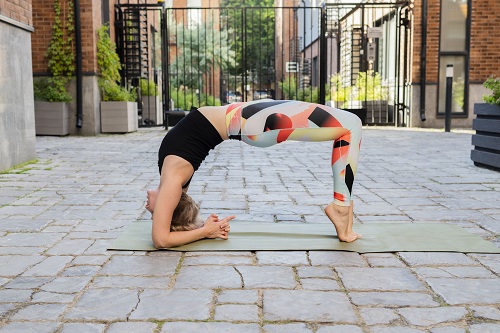ABOUT HATHA YOGA
Yoga History
Hatha yoga is the most known yoga tradition in the west. However, it is worth saying that this is not the only and by far not the most ancient branch of yoga. First evidence of yogic beliefs and practices is typically dated back to vedas, ancient Indian hymns (approximately 1500 - 1000 BCE). Earlier yogic paths, such as raja and jnana, emphasized study and meditation as means of self actualization. There was no mention of physical exercise at all. In contrast, hatha yoga is a more body-centered yoga practice. It is believed to have appeared by around 1,000 CE.
What is hatha yoga?
Hatha tradition posits that our body is a sacred temple. Hence, it is impossible to achieve any spiritual liberation if your body is not strong and healthy enough. However, it is important to understand that hatha yoga is not solely, and even not primarily about physical exercise. As with any other branch of yoga, the purpose of hatha yoga is to help the practitioner let go of their ego and achieve the highest state of spiritual realization. Important vehicles of self-realization for a hatha yogi are breath control practices (pranayama) and meditation.

What to expect from a hatha vinyasa class?
Vinyasa, from Sanskrit "placing in a special way", refers to linking hatha asanas with special movements coordinated with breath. As a result, your yoga practice looks like a beautiful uninterrupted dance. In yoga, we refer to these sequences as flows.
More than fitness
It is only natural that it is the promise of physical wellness that draws most of us to the mat when we start practicing. Who wouldn't like to look like an Instagram influencer in their incredible binds and twists?
There's really no shame in seeing yoga purely as a physical exercise. Even if the only thing you get out of a yoga class is better muscle tonus, that's already a great, positive outcome.
However, what might happen next (or may not, really no expectation here) is that you start feeling emotional and spiritual benefits of your practice. You may start feeling calmer, more balanced, less irritated. Next, you might notice that you've become more disciplined. One day you may find out that you've learned how to let go of your expectations not only on the mat, but in life.
Those who are ready to take it to the next step may start exploring meditative states of pure concentration. Finally, the select few, after years of persistent practice, are truly able to achieve the mysterious transcendental states of nirvana that yoga scriptures speak about.

To conclude
What we invite you to remember is that it does not matter where you are on your yoga path: at the very beginning or conquering the highest peaks. What matters is simply showing up on your mat and taking the time to explore your body, mind and spirituality - in whatever combination you choose them to be. Enjoy this incredible journey!
Namaste.

